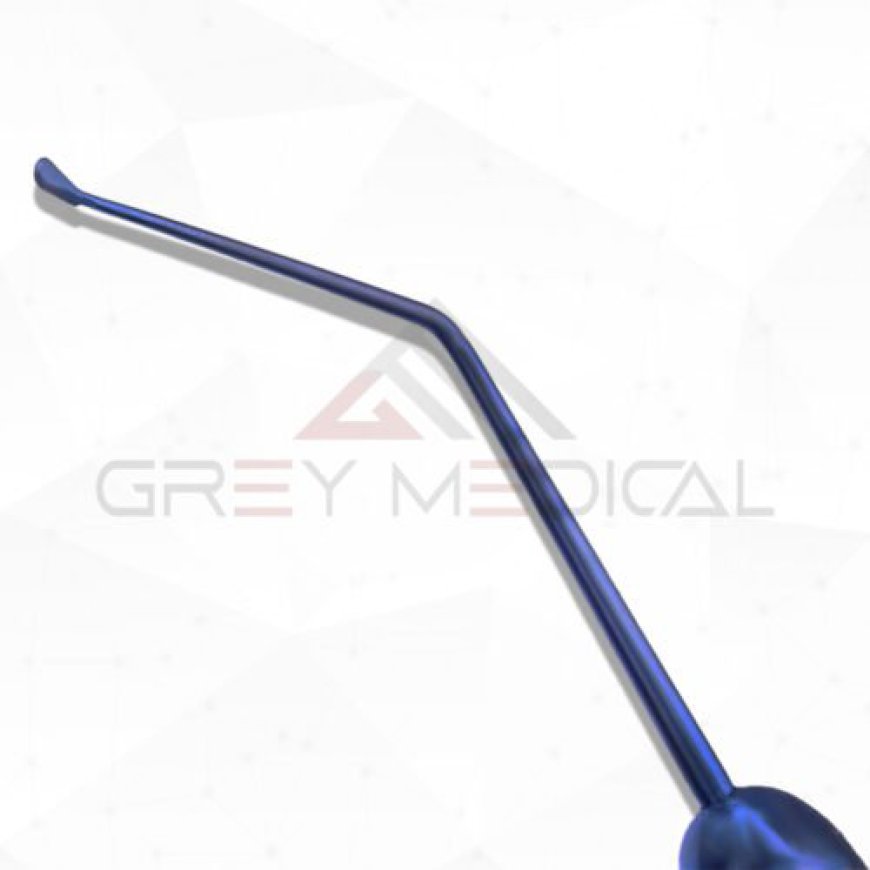Bone Polisher: Revolutionizing Bone Surgery and Recovery
Capsule Polisher – Achieving Clarity and Precision with Grey-medical
Bone surgery, whether for trauma repair, joint replacement, or spinal procedures, often involves reshaping, cutting, or altering bones to improve function or treat injury. After these procedures, it is crucial to ensure that the bone surfaces are smooth, well-aligned, and free from sharp edges. The bone polisher, a specialized surgical tool, plays an essential role in achieving this goal. By providing precise and efficient bone smoothing, the bone polisher helps enhance surgical outcomes, minimize complications, and accelerate the healing process. In this blog, we delve into the importance of the bone polisher and how it has become an indispensable tool in the modern operating room.

The Function of a Bone Polisher
A bone polisher is designed to smooth rough edges and surfaces of bones that have been altered during surgery. Whether during orthopedic procedures such as joint replacement, trauma surgeries for fractures, or spinal fusions, bones often need to be reshaped or cut. This can leave jagged, uneven edges, which, if left untreated, can lead to discomfort, irritation, or further complications. The bone polisher addresses this by using an abrasive, rotating tip that smooths the bone surface, reducing the risk of bone-on-bone friction or irritation of surrounding soft tissues.
The tool works by utilizing motorized control, which allows the surgeon to apply steady, consistent pressure while polishing the bone. This helps prevent excessive bone removal and ensures a smooth, even finish. Different polishing tips can be used depending on the procedure and the specific needs of the bone, ensuring that the instrument remains versatile across various types of surgery.
Applications in Orthopedic and Trauma Surgery
The bone polisher is particularly common in orthopedic and trauma surgery, where bone reshaping is often necessary. For instance, in joint replacement surgeries such as hip or knee replacements, the surgeon must smooth the surface of the bone after it has been cut to fit the prosthetic. A properly polished bone surface allows the prosthetic joint to fit more securely, reducing the risk of loosening or instability post-surgery.
Similarly, in trauma surgeries, bones that have been fractured and are then reconstructed or stabilized with screws, plates, or other devices require smoothing. The bone polisher removes rough edges that could potentially irritate soft tissues or hinder the healing process. By providing smoother surfaces, the polisher ensures that the surrounding tissues experience less friction, promoting better recovery and less postoperative discomfort.
Enhancing Spinal Surgery Outcomes
In spinal surgery, precision is especially critical, as the bones involved are in close proximity to delicate nerve structures. Whether performing spinal fusions, discectomies, or laminectomies, surgeons often need to alter vertebral bones. After cutting or reshaping the bones, the bone polisher is used to smooth the surface, ensuring that the bones align correctly and that there are no sharp, jagged edges that could damage nerves or disrupt the surgical site.
Polishing the bone also enhances the overall success of spinal fusion procedures, where two vertebrae are fused together. A smooth, properly contoured bone surface allows the bones to heal properly and reduces the risk of complications such as poor graft integration or nerve irritation.
The Role of the Bone Polisher in Accelerating Recovery
One of the key benefits of using a bone polisher in surgery is its role in improving the healing process. Smoothing rough bone surfaces reduces irritation to surrounding tissues, which can accelerate recovery. The polished bone also promotes a better interface with implants, such as prosthetic joints or spinal implants, which can lead to a more secure fit and reduced chances of implant-related issues.
By minimizing the risk of post-surgical complications, such as irritation, swelling, or discomfort, the bone polisher helps patients recover more quickly. In the long term, it contributes to more successful surgical outcomes, leading to improved mobility and function, and reduced need for follow-up surgeries.
Durability and Precision of the Bone Polisher
Bone polishers are built for durability and precision. Made from high-quality, surgical-grade materials, these tools can withstand the demands of the operating room, including frequent sterilization and intense usage. The motorized function ensures that the polishing process is both efficient and precise, providing controlled and accurate smoothing that minimizes the risk of damage to surrounding tissues.
The versatility of the bone polisher is also a major advantage. With interchangeable tips and various speed settings, the tool can be customized to suit different types of procedures and bones, from the large surfaces in joint replacement surgeries to the delicate structures in spinal surgery. This adaptability makes the bone polisher an essential tool in modern surgical practices.
Conclusion: A Vital Tool in Modern Surgery
The bone polisher has proven to be an indispensable instrument in a wide range of surgical specialties. From orthopedic to spinal surgeries, this tool enhances the precision of bone surface smoothing, reducing the risk of complications and promoting better healing. By ensuring smoother, more natural bone surfaces, the bone polisher contributes significantly to the success of joint replacements, trauma repairs, and spinal procedures.
As technology advances, the role of the bone polisher will continue to evolve, with innovations aimed at making the tool even more efficient and user-friendly. However, its core function — refining and smoothing bone surfaces to optimize surgical outcomes — will remain central to its importance in the operating room for years to come.

 Greymedical
Greymedical